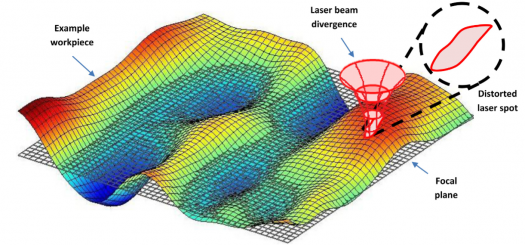Summary
The need to machine micro features on ever harder and tougher material helped the rise of pulsed laser ablation in many manufacturing industries like aerospace, defence, biomechanics etc. Hence, it became apparent that there is a need for a simple model to predict the effects of laser machining onto the surface texture of the components. In contrast with the previous models characterised by complex multi-physics and/or computational demanding approaches, this paper presents a simple mathematical model, which can predict surface textures for PLA by considering the dynamic and energetic parameters as well as the initial surface gradient and the focal length of the laser. The only necessary step for rapid application of the model is to calibrate the material response to the energetic parameters to be used in the pulsed laser ablation process. It works on a pulse by pulse basis and the pulses are assumed to be instant, which is another reason for its fast calculation times. The novelty of model is its adaptability for the prediction of micro and macro surface texture on a wide range of materials by taking into account surface conditions of the component. It is independent of the type of laser used and computational faster than more complicated FEA models. Hence, it allows prediction of feature generation with innovative and complex beam paths using laser machining processes.
More information & hyperlinks
| Web resources: | http://www.sciencedirect.com/science/article/pii/S0924013614002672 |
| Country: | UNITED KINGDOM |



